Latin name: (Monstera)
Category: perennial evergreen shrubs and vines
Origin: South and Central America, East India
Monstera - the monstrous and charming queen of indoor flowers
Monstera (Monstera) is a genus of fifty species of evergreen tropical climbing vines collected in the Aroid family.
Monstera got its name due to its decent size and ugly bizarre shapes. If translated from Latin, monstrum is a monster. Another version of the origin of the name of the plant from the Latin word monstrosus - "amazing", "bizarre". The popular name is the crybaby plant. Room monstera is a barometer and predicts rain. In a humid room, water droplets appear on monstera leaves.
The natural habitat of the tropical forests of South, Central America and East India. Here, the natural harsh environment provides an opportunity to reach a tropical vine up to fifty meters long. She climbs huge trees, providing comfortable conditions for her huge leaves, the diameter of which reaches one meter. It receives food from the ground through hanging roots. Blossoming nondescript cream-colored cobs turn into berries that have a taste similar to pineapple.
So that the plant does not grow in breadth and does not take up much space, it is given a vertical shape - and this is done with the help of special supports.
Many indoor plant lovers like the way the monstera flower looks at home. The popularity of the plant with the extraordinary beauty of openwork leaves is growing. Monstera in the interior of any room - in an apartment, office, hall, living room, library will look majestic. Monstera caring for her is not at all difficult, but by fulfilling certain conditions of existence, we will have a two-meter beauty in two years, which will not only green the territory, but also absorb radiation from equipment, and purify the air. A close relative of the monstera is the philodendron.
Monstera species
Monstera attractive or delicacy (Monstera deliciosa)
Central America, the birthplace of a tropical beauty. In the humid jungle, located 1000 m above sea level, cylindrical stems, up to seven centimeters in diameter, climbing vines can overcome a twelve-meter height. Leathery, dissected, with holes, the leaves of these exotic beauties resemble a heart up to sixty centimeters in size.
Blooms with white buds. Fragrant sweet berries ripen on twenty-five centimeter cobs and turn into a delicacy. Inhabitants of the tropics use the fruits of monstera delicacy in nutrition.
The monstera flower, thanks to its attractive and charming external data, is increasingly decorating and greening living quarters.
Monstera Borziga (Monstera deliciosa borsigiana)
Compact non-flowering indoor vine. An artificially bred variety from Mexican ancestors. Thin stems are decorated with thirty-centimeter heart-shaped, evenly cut leaves.
Monstera adanconi (Monstera adanconi)
Representatives of this species grow in tropical forests between Brazil and Costa Rica. They are located on trees, reaching a height of eight meters. Ovate thin leaves up to half a meter long and up to forty centimeters wide. The entire area of the sheet is decorated with holes.
It is not realistic to see the flowering of Adanson monstera at home, but the ideal moment would be the appearance of a light yellow ten centimeter cob.
Monstera marble or motley (Monstera variegata)
A native of South America and East India. A distinctive feature of this exotic is the combination of green and beige colors on the leaves and stems.
Monstera Alba or variegated (Monstera variegata)
The most beautiful and more capricious variety of monstera. The variegation of leaves in a combination of dark green and white flowers make it especially attractive. On a multi-colored stem, the first leaves are solid, and the subsequent ones become more openwork and divided. Monstera Alba lighting should be bright and the room should be warm.
Monstera oblique or unequal (Monstera obligate)
Not symmetrically located on the stem, lanceolate in the shape of an ellipse, shiny leaves on thirteen cm petioles can reach 25 cm. The central vein on the leaf plate is located obliquely. Peduncle 8 cm high presents the inflorescence in the form of a few-flowered four centimeter cob.
Monstera home care
How to care for a monster? The houseplant does not claim special care. The main thing is to create monstere conditions close to natural and a lot of space.
Location selection and monstera lighting
Windows from the east and west are ideal for a tropical beauty. For comfortable and fast growth of large slotted leaves with holes, bright diffused light is desirable. Often you should not change the location of the monstera, and a support that can indicate the path of the vine up to save space will not be superfluous.
Monstera is completely unpretentious! It is perfect for beginner flower growers, the main thing is to provide it with enough space. The only thing she does not like is when she is moved from place to place.
Temperature regime
It is desirable to keep the range of temperature indicators in the warm season within 21-25˚С. Winter low level 10˚С. The main thing is to protect the plants from drafts.
Monstera watering and air humidity
In the warm off-season, water the plant abundantly. Water is recommended soft, separated, warm. The soil should not be very wet, but moisture should be present.
The most comfortable humidity can be considered at least 60%. To do this, the plant must not only be watered, but also regularly wipe the leaves, keeping them clean. Spraying will only benefit.
Soil and fertilizer monstera
Suitable earthen mixture for deciduous plants. It can be purchased at the store. At home, you can prepare a composition of peat, sand, humus and a double portion of soddy land.
It is advisable to feed an adult plant from spring to the first frost, every fifteen days. More suitable mineral and organic fertilizer for monstera or all deciduous. Young specimens do not require additional feeding.
Transfer
An annual spring transplant of young monstera will be very useful, the next transplant in three years.
Monstera breeding
Monstera can be propagated by apical cuttings, leaves, air layering, stem cuttings. It is necessary to plant the material directly into the earthen mixture. It is necessary to create a microclimate with a rooting temperature of 25-27˚С.
Monster pests and diseases
With good care for your exotic, you can avoid the appearance of uninvited guests in the form of:
- scale insects,
- spider mites,
- aphids.
Having found pests, we urgently take measures to destroy them. It is necessary to treat the flower with soapy water. Then we apply special chemicals.
Carefully look after and take care of your beauty, and she will not only decorate your home or office, but also cheer you up with her charm and magnificence.
Remember, monstera is poisonous. Monstera harm: ingestion of the juice of the plant can lead to skin dermatitis and irritation of the mucous membranes. Use gloves when handling flowers.
Nightshade is also a poisonous plant.




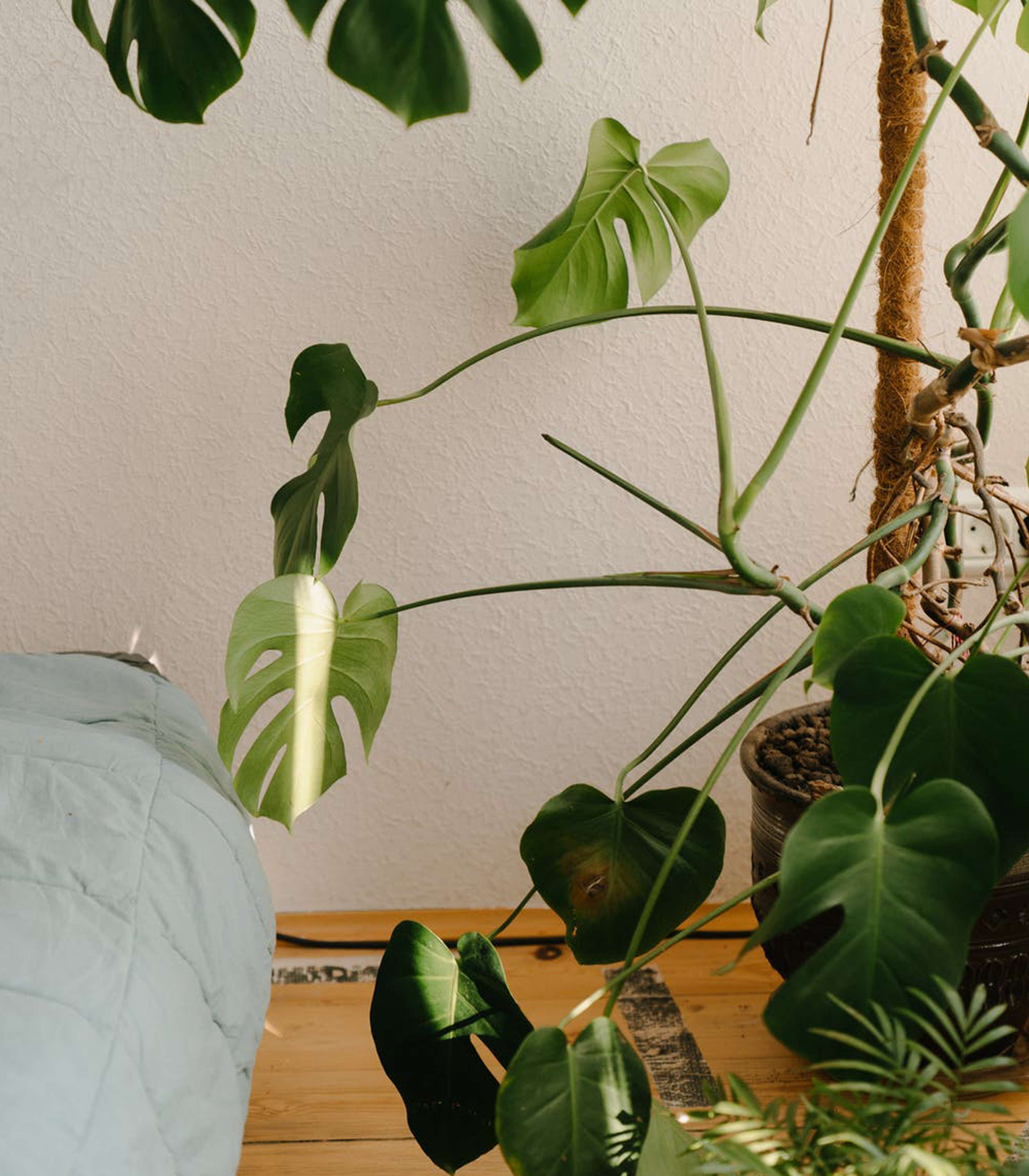











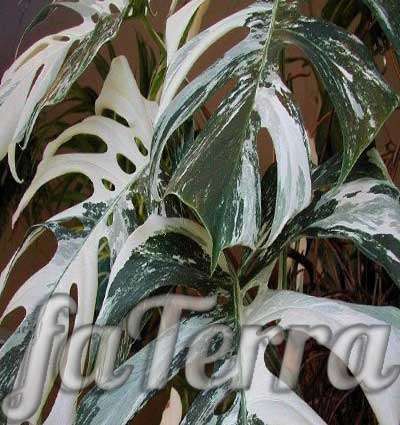
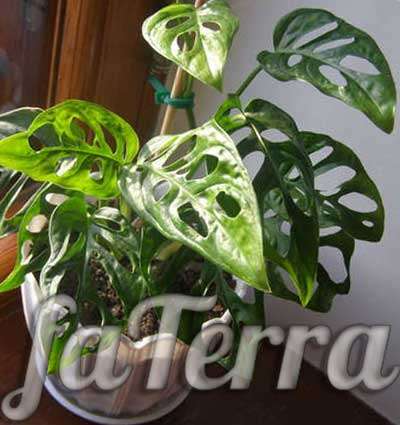
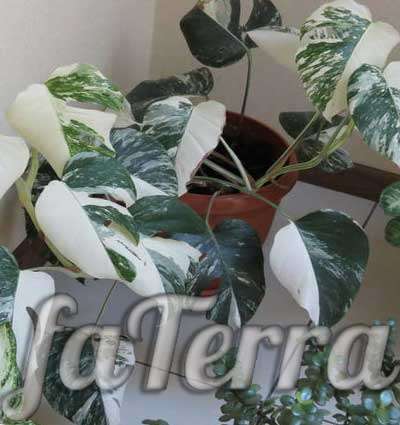

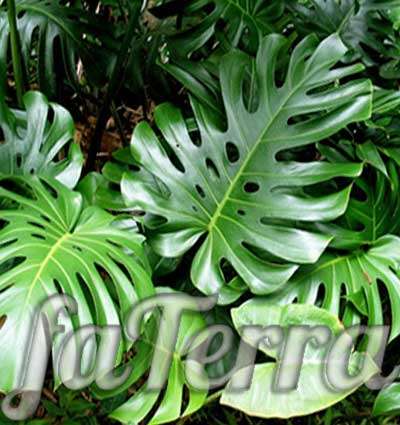
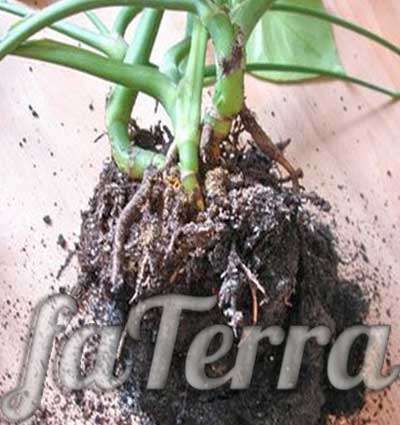
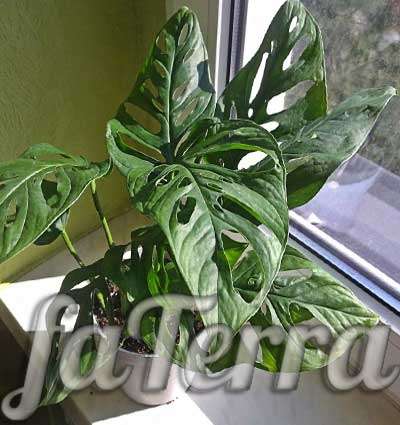
Write comments
Comments
сергей